FOR ALL AGES
From Peter Pan to parakeets, these neighbouring parks pack in plenty of surprises for children. This 1.5 mile walk introduces some of the highlights.
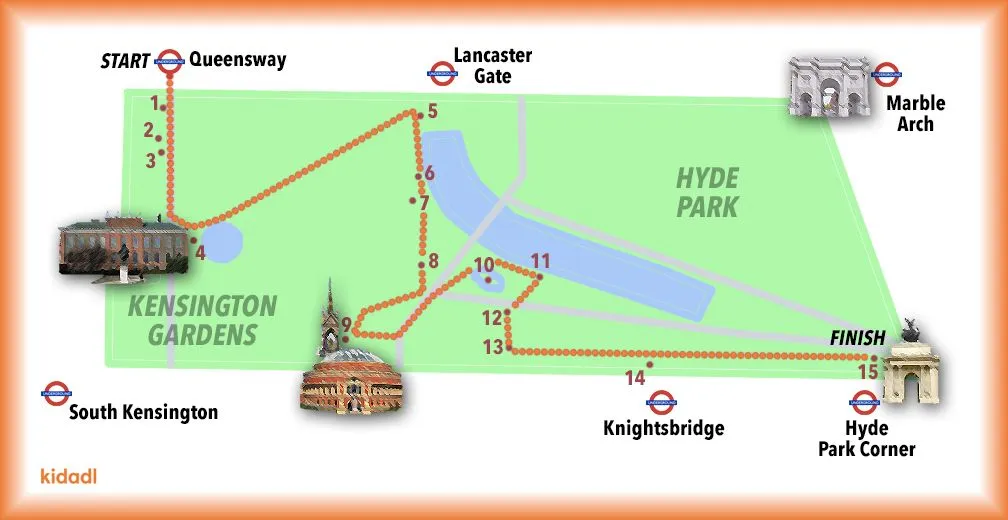
Kensington Gardens and Hyde Park route. Image by the author.
Start the walk at Queensway tube station on the Central line. Carefully cross over the busy Bayswater Road and enter Kensington Gardens via the Black Lion Gate.
1. Welcome to Kensington Gardens, home of Kensington Palace, Peter Pan and a lot of ducks. We’re going to take a gentle walk around some of the highlights. If you’d prefer, a cycle hire docking station can be found immediately inside the gates. Much of the route follows the main paths, which are open to cycles.
Head a little way south, where you’ll find signs into the Diana Memorial Playground.
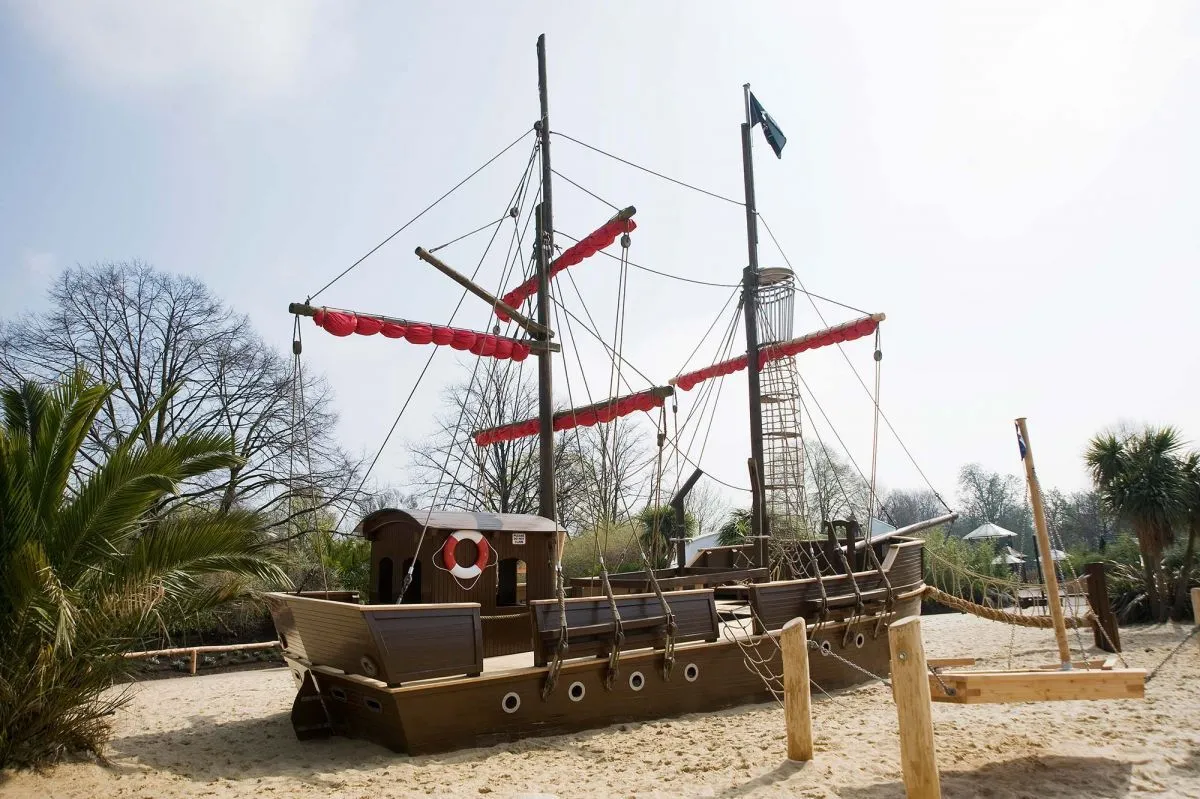
Image: The Royal Parks
2. The Diana Memorial Playground -- one of several features of the park named after the late princess -- is simply one of the best outdoor play areas in London. It’s centred around a marooned pirate ship, a nod to the Peter Pan stories (more on which later). Kids will love scrambling between the decks, or exploring the wider network of sandpits, forts and splash pools. The play equipment would best suit the over-5s, but we found plenty for our three year old to get her fingers into, including a sensory trail. At busy times, you may have to queue to get into this playground, but it is sensational. [Note: the playground is operating at reduced capacity during the Covid-19 period.]
Leave the playground when the kids have had their fun, and carry on south.
3. Just south of the playground, towards the Palace, look our for the Elfin Oak. This is the caged stump of a long-dead oak tree, which is populated with gnomes, pixies and other fairy creatures. It was assembled almost 100 years ago by Ivor Innes and is Grade II listed.
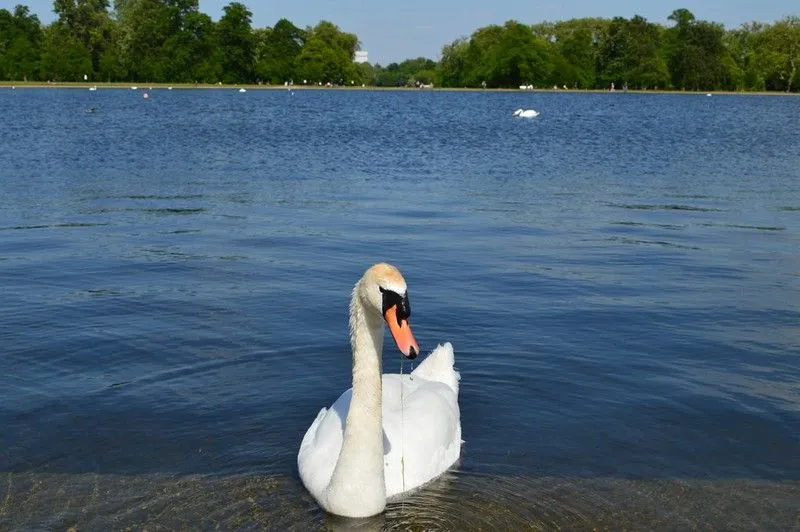
Swan on the Round Pond. Image by the author.
Keep heading south, towards the palace and Round Pond.
4. As you pass by Kensington Palace on its east side, look out for the statue of Queen Victoria. This was sculpted by her own daughter, Princess Louise -- a rare example of a Victorian public statue crafted by a woman.
Skirt along the northern edge of the Round Pond and head north-east towards the Italian Gardens.
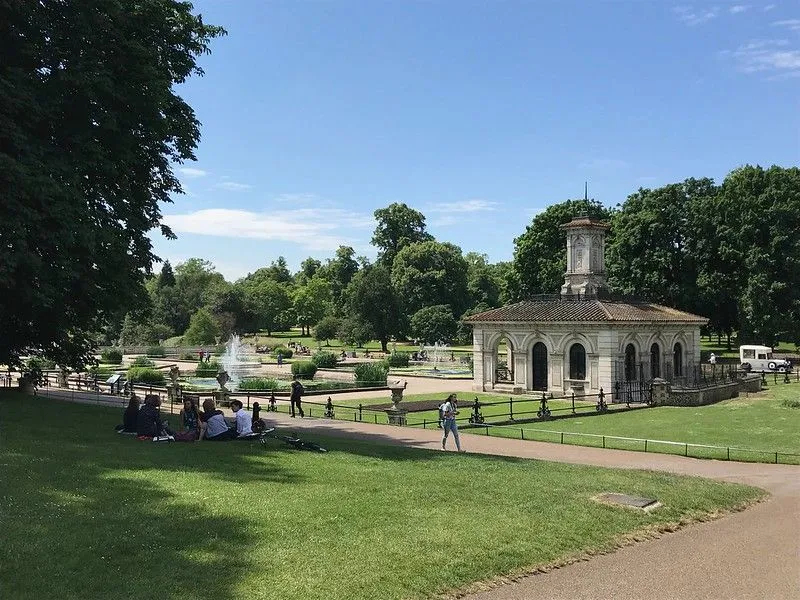
Italian Gardens. Image by the author.
5. The Italian Gardens are a delight in the summer, with numerous fountains playing among the marble and Portland stone. The landscaping dates from 1860, and was overseen by Prince Albert. Look out for the statue of Edward Jenner, who pioneered the smallpox vaccine in 1796.
Head south along the bank of the Serpentine (technically called the Long Water at this point).
6. You’ll soon encounter a much more famous statue -- and one to somebody who never existed. The Peter Pan statue has stood in the gardens since 1912, commemorating the beloved children’s character created by JM Barrie. Barrie lived nearby, and his stories are partly set in the park. A little-known fact: the statue was tarred and feathered by students in 1928.
Continue south along the Serpentine. Very soon, you’ll find a small clearing on the right, where you may hear a familiar skwark.
7. Anyone who spends time in the Royal Parks will soon spot a parakeet or two. The birds are now a common sight around London, but there’s a particular tame colony in this part of Kensington Gardens. I’ve found that this location is the best place to get up close to the green birds. They will even land on an outstretched arm.
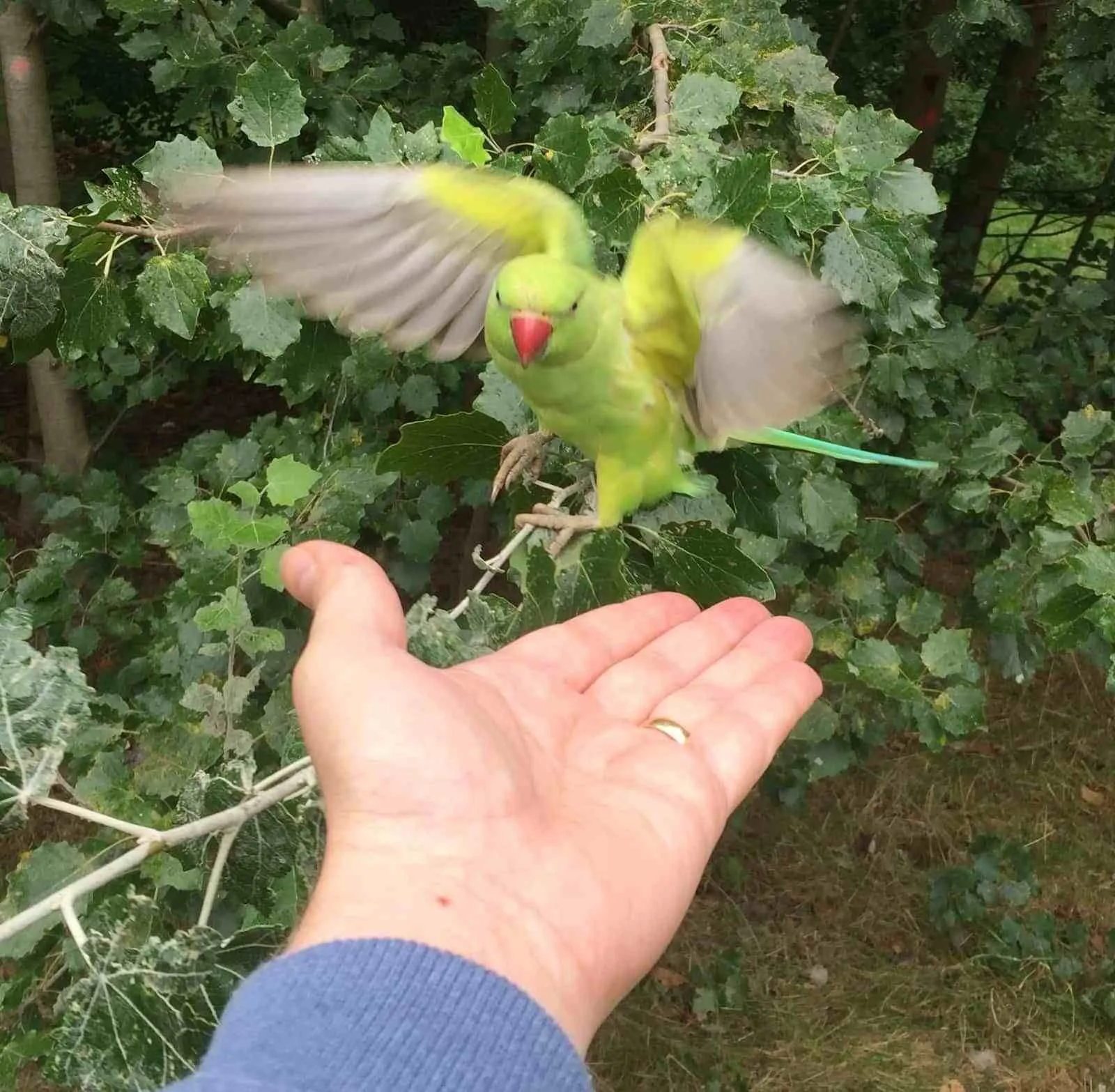
A bird in the hand... Image by the Author
Continue south to the Serpentine Gallery.
8. This delightful little gallery is noted for its free shows of contemporary art. During the summer months, a specially commissioned pavilion stands in the grounds. Each year’s pavilion is a site-specific design by a leading architect. You are welcome to wander in and let the kids explore a unique building.
You should now be able to see the lofty spire of the Albert Memorial, a little farther to the south.
9. The great memorial to Queen Victoria’s husband has divided people over the centuries. When initially erected, some commentators thought the confection was too gaudy and cluttered. Today, it’s a much-loved feature of the park. Children will particularly enjoy the many animal sculptures at the four corners. See if you can get them to work out which continent is represented by each group of animals.
Back-track a little, and head across the road into Hyde Park, where you’ll soon find the Diana Memorial Fountain.
10. Less of a fountain and more like a circular stream, this mother of all water features is a popular spot for families. You’re permitted to cool your feet in the water by sitting down, but paddling is frowned upon. (Note: the fountain is currently [July 2020] closed as part of Covid-19 safety measures).
Track east a little way, along the banks of the Serpentine.
11. This pleasant walk is a great place to spot ducks and geese, and generally admire the landscaped setting. This area contains a cafe and toilets if you need a refreshment break.
Head south again and cross the sandy track.
12. This bridleway is hundreds of years old and known evocatively as Rotten Row. The name is ironic given that the track was formerly a road used by royalty. Some think that the name comes from the French “Route du Roi” (road of the king), though nobody is sure. Rotten Row was also the first road in London to be lined with gas lamps, installed in the late 17th century.
Head south to the next roadway and hunt for a plaque.
13. Can you find it? The plaque relates how the Crystal Palace was built on this site to house the 1851 Great Exhibition. This gigantic greenhouse would have absolutely dominated this space and was so colossal it contained several mature trees. After the exhibition closed, the structure was dismantled and re-erected in Sydenham. The area of Crystal Palace is named after the building, which burned down in the 1930s.
We now enjoy a lengthy stroll east towards Hyde Park Corner.
14. Feel free to leave the path, and explore the mature trees that line this part of the park. The tall tower block on your right is part of the Hyde Park Barracks. A little beyond, beside the road, look out for an impressive sculpture of a family. This is called The Rush of Green and was the last sculpture completed by Jacob Epstein. It depicts a mother, father, child and dog rushing out into the park. The slightly demonic figure behind them is the Greek god Pan (note the pan pipes).
Keep heading east to finish the tour near Hyde Park Corner.
15. This corner of the park is packed with features of interest, including a delightful rose garden, the giant statue of Achilles and Apsley House, the home of the Duke of Wellington (also known as Number One, London). Hyde Park Corner itself is worth exploring, with numerous statues, memorials and the giant triumphal arch (open to the public when not restricted by Covid-19). Hyde Park Corner tube station is just beneath.
Read The Disclaimer
At Kidadl we pride ourselves on offering families original ideas to make the most of time spent together at home or out and about, wherever you are in the world. We strive to recommend the very best things that are suggested by our community and are things we would do ourselves - our aim is to be the trusted friend to parents.
We try our very best, but cannot guarantee perfection. We will always aim to give you accurate information at the date of publication - however, information does change, so it’s important you do your own research, double-check and make the decision that is right for your family.
Kidadl provides inspiration to entertain and educate your children. We recognise that not all activities and ideas are appropriate and suitable for all children and families or in all circumstances. Our recommended activities are based on age but these are a guide. We recommend that these ideas are used as inspiration, that ideas are undertaken with appropriate adult supervision, and that each adult uses their own discretion and knowledge of their children to consider the safety and suitability.
Kidadl cannot accept liability for the execution of these ideas, and parental supervision is advised at all times, as safety is paramount. Anyone using the information provided by Kidadl does so at their own risk and we can not accept liability if things go wrong.
Kidadl is independent and to make our service free to you the reader we are supported by advertising.
We hope you love our recommendations for products and services! What we suggest is selected independently by the Kidadl team. If you purchase using the buy now button we may earn a small commission. This does not influence our choices. Please note: prices are correct and items are available at the time the article was published.
Kidadl has a number of affiliate partners that we work with including Amazon. Please note that Kidadl is a participant in the Amazon Services LLC Associates Program, an affiliate advertising program designed to provide a means for sites to earn advertising fees by advertising and linking to amazon.
We also link to other websites, but are not responsible for their content.
Was this article helpful?
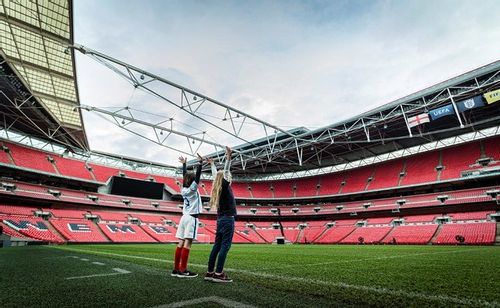
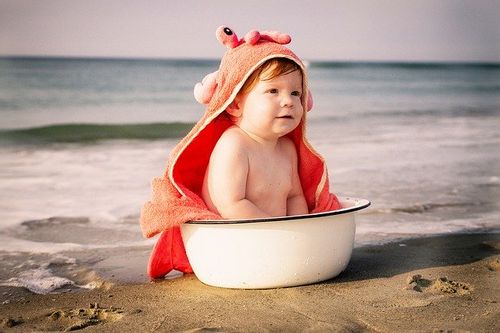
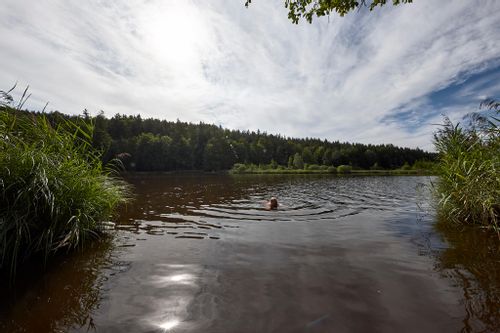
Browse Category

We’ll send you tons of inspiration to help you find a hidden gem in your local area or plan a big day out.



Check your inbox for your latest news from us. You have subscribed to:
Remember that you can always manage your preferences or unsubscribe through the link at the foot of each newsletter.